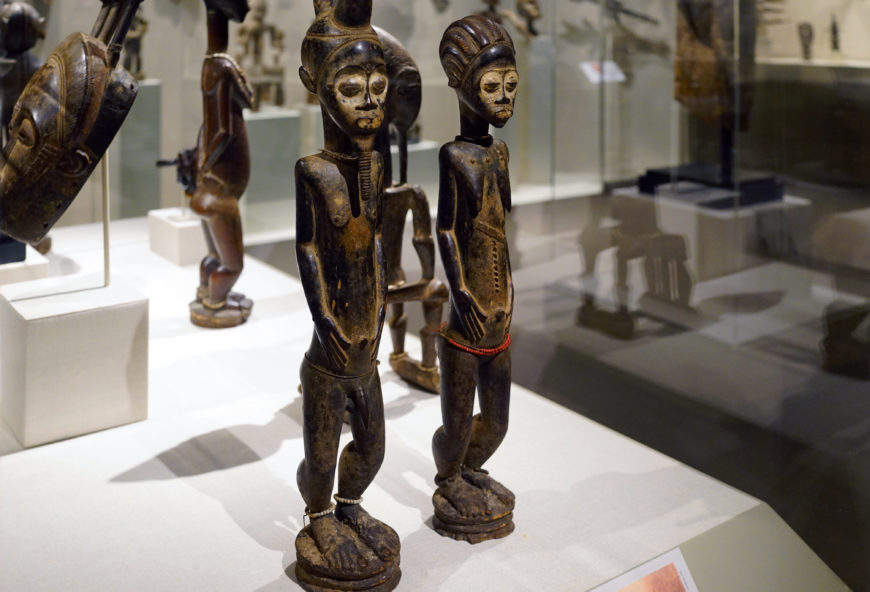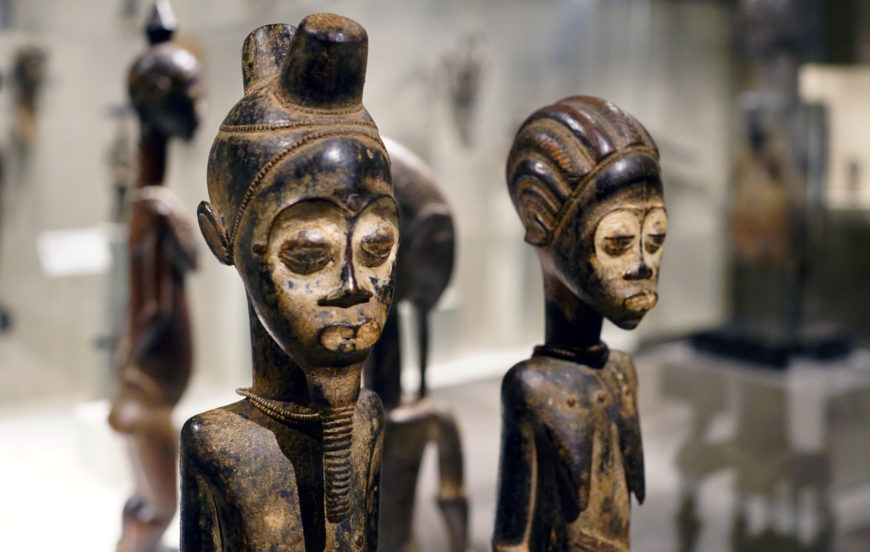
Pair of Diviner’s Figures, 19th–mid-20th century (Baule peoples, Côte d’Ivoire), wood, pigment, beads and iron, 55.4 x 10.2 x 10.5 cm (The Metropolitan Museum of Art; photo: Steven Zucker, CC BY-NC-SA 2.0)
Carved by the same hand, these figures reflect and embody Baule ideals of civilized beauty. In Baule society, diviners commission such figures from artists to attract the attention of asye usu, or nature spirits. Asye usu are considered to be grotesque and volatile beings associated with the untamed elements of nature. The spirits are seduced from the wilderness by the figures’ dazzling beauty and lured into inhabiting the sculptures, which embody the civilized values the asye usu lack and therefore find so desirable. The asye usu are then induced into sharing spiritual insights, conveyed through the medium of the diviner.
Such figures are prominently displayed during ritual sessions with clients who seek clarification about their difficulties, which can range from poor harvests to physical illness. The presence of the sculptures and the sacrificial material applied to their feet (never to the smooth surfaces of their bodies), along with repeated striking of a gong, help to induce the trance state that allows the diviner to communicate with the asye usu. The diviner can then gain insights and revelations regarding the source of the client’s problems. The ownership of such extraordinary works also serves to further the professional standing of the diviner, who must impress potential clients with the caliber and sophistication of the instruments used in his or her practice.

Faces (detail), Pair of Diviner’s Figures, 19th–mid-20th century (Baule peoples, Côte d’Ivoire), wood, pigment, beads and iron, 55.4 x 10.2 x 10.5 cm (The Metropolitan Museum of Art; photo: Steven Zucker, CC BY-NC-SA 2.0)
Although depicted separately, the male and female figures are perfectly harmonized through their matched forms, gestures, stances, and expressions. Their elaborate coiffures, intricate scarification, and beaded accoutrements signify cultural refinement and status. Their erect, balanced pose and partially closed eyes imply respect, self-control, and serenity. The fully rounded muscles of their flexed legs suggest physical strength, youthful energy, and the potential for action. White kaolin accentuates the elegant arches of their eyebrows, reflecting the practice of diviners, who apply the fine clay around their eyes to facilitate communication with the spirits.
© 2006 The Metropolitan Museum of Art, New York (by permission)

